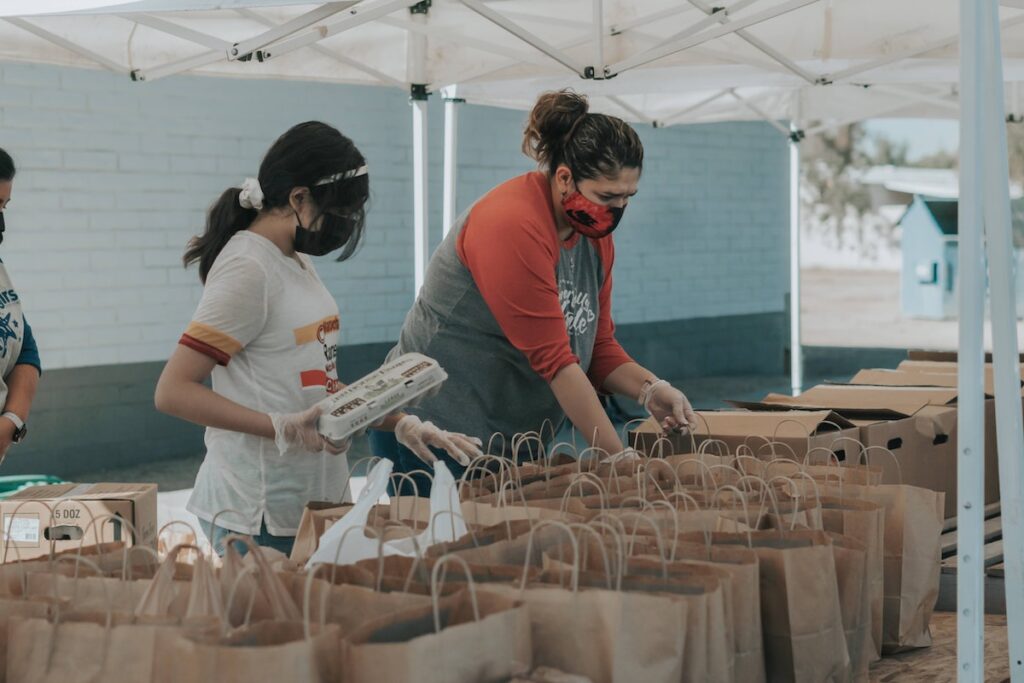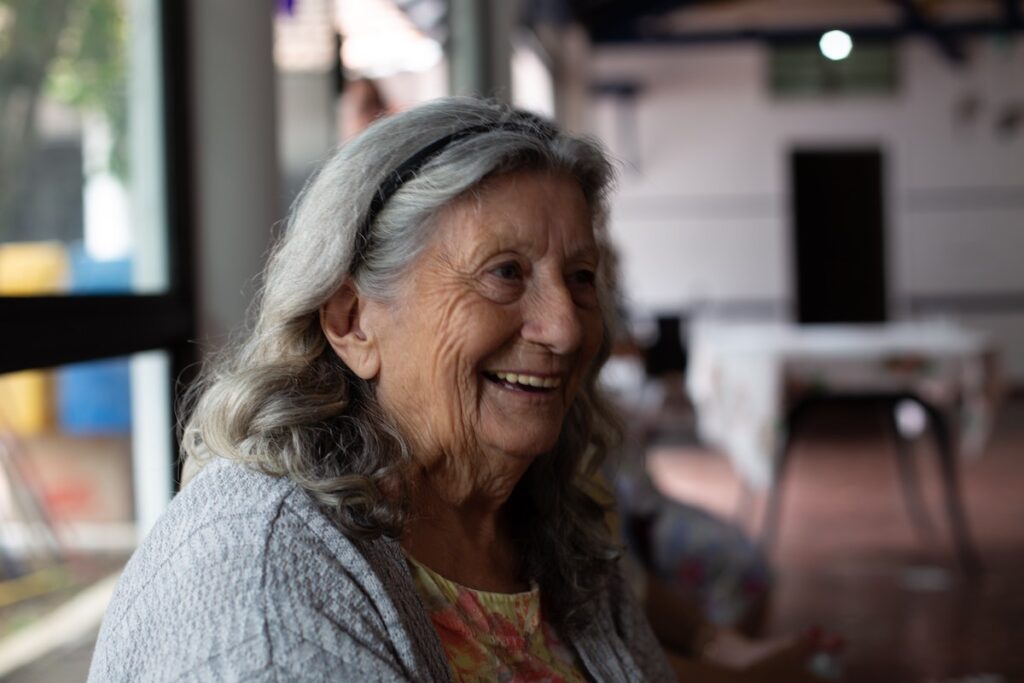
Nationally and globally, we are experiencing an ageing population. This is costing the economy both in terms of the health needs of this group and the loss of a valuable workforce as they enter retirement (WHO, 2012). It is projected that in the UK by 2066, adults aged over 65 will make up 26% of the total population (ONS, 2018).
The idea of older adults engaging in activities to preserve their cognition and reduce incidents (such as falls) is not new. Volunteering is one such activity that could help both the economy and the individual.
What is volunteering?
Based on Hustinx et al (2010), the authors of this paper defined formal volunteering based on four axes:
- Free will;
- Remuneration wherein there is no monetary compensation;
- Intended beneficiaries with volunteer work benefiting strangers;
- Structure with volunteering involves planned ongoing activities.
Volunteering may impact health through providing a sense of purpose, increase self-esteem, reason for being active, sense of control, generative activity in later life, and increase social interactions (Warburton, 2006). The Age UK Index of Wellbeing in Later Life (Age UK, 2017) found maintaining meaningful engagement with the world around you in later life is particularly important. With the ageing population and the health benefits of volunteering, a recent Campbell systematic review (Filges et al, 2020) aimed to answer the research question: “what are the effects of volunteering on the physical and mental health of people aged 65 and older?”

Volunteering can have positive health benefits including a sense of purpose, increased activity, and improved social connections. This is particularly important for older retired adults to help preserve wellbeing and cognitive health.
Methods
Several search strategies were used including 8 electronic databases, hand searching five specific targeted journals, grey literature, citation tracking, contacting other researchers, and general search engines. Searches were conducted at different times, with the databases searched in 2018 and the other resources in 2019.
Studies were selected if participants were aged 65 or over and the intervention was formal volunteering as defined above. The primary outcome measures were based on physical and mental health. All voluntary work interventions were included regardless of the organisational context.
Risk of bias was assessed using a model that is an extension of the Cochrane Non-Randomised Studies Methods Group (Reeves, 2007). These were reviewed by main researchers and two assistants.
Results
Out of 90 studies that met the inclusion criteria, 46 were judged as too high risk of bias. 18 did not provide enough information and 2 used the same data sets. The remaining 24 analysed 19 different datasets of different populations. A meta-analysis of health outcomes was conducted on each metric separately.
Physical health outcomes
Positive effects favoured the volunteers, including:
- lower mortality rate (hazard ratio 0.76; 95%CI, 0.72 to 0.80)
- lower odds of dying (odds ratio 0.69; 95%CI, 0.58 to 0.83)
- lower need of requiring long-term care (hazard ratio 0.83; 95%CI, 0.72 to 0.97)
- lower odds of not maintaining functional competence (odds ratio 0.81; 95%CI, 0.70 to 0.94)
Lower odds of decline in independent activities of daily living were also found, but were not statistically significant (odds ratio 0.73; 95%CI, 0.53 to 1.01).
For other physical outcomes, e.g. doctor visits, the evidence was inconclusive due to too few studies.
Mental health outcomes
- 3 studies used depression as an outcome and the authors were able to calculate a standard mean difference. Volunteers were better off than controls in terms of depression (random effects weighted SMD was 0.12; 95%CI, 0.00 to 0.23), but the authors concluded that “evidence was inconclusive because too few studies contributed data”.
Other health outcomes were only reported in one single study.

This systematic review suggests that volunteering results in lower mortality rates for those aged 65 and over.
Conclusions
The authors of the systematic review concluded that though the effect size is small, the evidence does suggest that volunteering results in lower mortality rates for those aged 65 and over. The authors explain that the hazard ratio of 0.76 for mortality corresponds to a 57% chance of non-volunteers dying first. This is the only health outcome the authors felt there was sufficient evidence for. They were unable to comment on the type of voluntary work included in the studies as none of them included this detail.
43 studies were excluded from the data synthesis due to a high risk of bias, not being able to establish a causal effect, or not establishing a well-defined comparison group. The authors concluded that there is a need to improve the quality of research in this area, utilising longitudinal data to establish causality and including more details in the studies.

The effect of volunteering on mortality was the only outcome where there was enough evidence available for the researchers to draw a conclusion, while the need to improve the quality of research in this area is highlighted.
Strengths and limitations
The authors themselves point out the general limitations of the research in this area. In the 24 studies included, only six countries were represented which may limit the external validity, hence how the results can be applied in different cultural settings. However, excluding highly biased studies and performing sensitivity analyses strengthened this review, helping to improve the quality of the evidence and checking how robust the results were.
The authors included a range of voluntary work in their review, basing the intervention criteria of the four axes of formal volunteering. This allowed them to capture more data in what is a limited pool of quality studies. Additionally, using standardised axes allows for easier replication of the review. However, the broadness may impact the causality of the results. Volunteering is a varied field; encompassing everything from supporting with administration tasks to providing sports coaching. These tasks may have very different impacts on health outcomes (e.g. office-based role vs gardening in a local park) and this may confound the evidence.
Lastly, though this may seem a trivial limitation, I believe the abstract is simply too long. It is thorough and well explained, however, as someone who was once a student and someone who is now not in academia, I value abstracts that are concise and allow me to get the gist of the research very quickly. The plain language summary is a great addition to the review, and the inclusion of a shorter abstract will further help with access to science and research.

Researchers should consider the needs of the reader and appreciate the value of a succinct abstract that allows anyone to get an overview quickly. This will help to improve access to science, especially by people without an academic background.
Implications for practice
I have been volunteering and working with charities for the past decade and have both personally felt and seen the benefits of volunteering on individuals and their communities. Volunteering can give you valuable skills, help you meet new people, and in my opinion, you can’t beat that feel-good factor from helping out on a project. It’s great to see that research is being done to explore the benefits of this intervention in older adults. However, the field desperately needs more high-quality research. As this is a relatively affordable intervention, further research could use a randomised controlled trial design. One group of older adults could all be randomly allocated to a specific volunteering intervention, and their health outcomes can be compared to a well-matched control group. It may also be beneficial to explore the mechanisms or factors of specific volunteering types to see if the intervention can be optimised.
Beyond the personal benefits, older adults could also help to fill in “gaps” in services, e.g. maintain public gardens, tutor young people, and/or provide administrative support to charities. For example, on the UK national website ‘Do It’, an online platform for volunteering recruitment and opportunities, at the time of writing there are 556,577 volunteering roles available (Do It, 2021). This is 556,577 needs that are currently being unmet in the community. Older adults may be well-equipped to take these roles, improving their own wellbeing and that of the wider community.

Volunteering can be a win-win: improving the health of the volunteer and helping to support valuable community services.
Statement of interests
Whilst Sophie has no connection to the study or researchers, she works for a charity that supports older adults.
Links
Primary paper
Filges, T., Siren, A., Fridberg, T., & Nielsen, B. C. (2020). Voluntary work for the physical and mental health of older volunteers: A systematic review. Campbell Systematic Reviews, 16(4), e1124.
Other references
Age UK (2017). Index of Wellbeing in Later Life.
Do It (n.d.) Discover. Retrieved 31st July 2021 from https://doit.life/discover
Hustinx, L., Cnaan, R. A., & Handy, F. (2010). Navigating theories of volunteering: A hybrid map for a complex phenomenon. Journal for the Theory of Social Behaviour, 40(4), 410–434.
ONS (2018). Living longer: how our population is changing and why it matters. Available from: Living longer – Office for National Statistics (ons.gov.uk)
Reeves, B. (2007). Cochrane Non-Randomised Studies Methods Group. The Cochrane Collaboration Methods Groups Newsletter, 31.
Warburton, J. (2006). Volunteering in later life: Is it good for your health? Voluntary Action: The Journal of the Institute for Volunteering Research, 8(2), 1–13.
WHO (2012). Global Health and Aging. Available from: http://www.who.int/ageing/publications/global_health.pdf
Photo credits
- Photo by Clément Falize on Unsplash
- Photo by Tatiana Zanon on Unsplash
- Photo by ray sangga kusuma on Unsplash
- Photo by Ismael Paramo on Unsplash
- Photo by Franki Chamaki on Unsplash
- Photo by Markus Winkler on Unsplash
